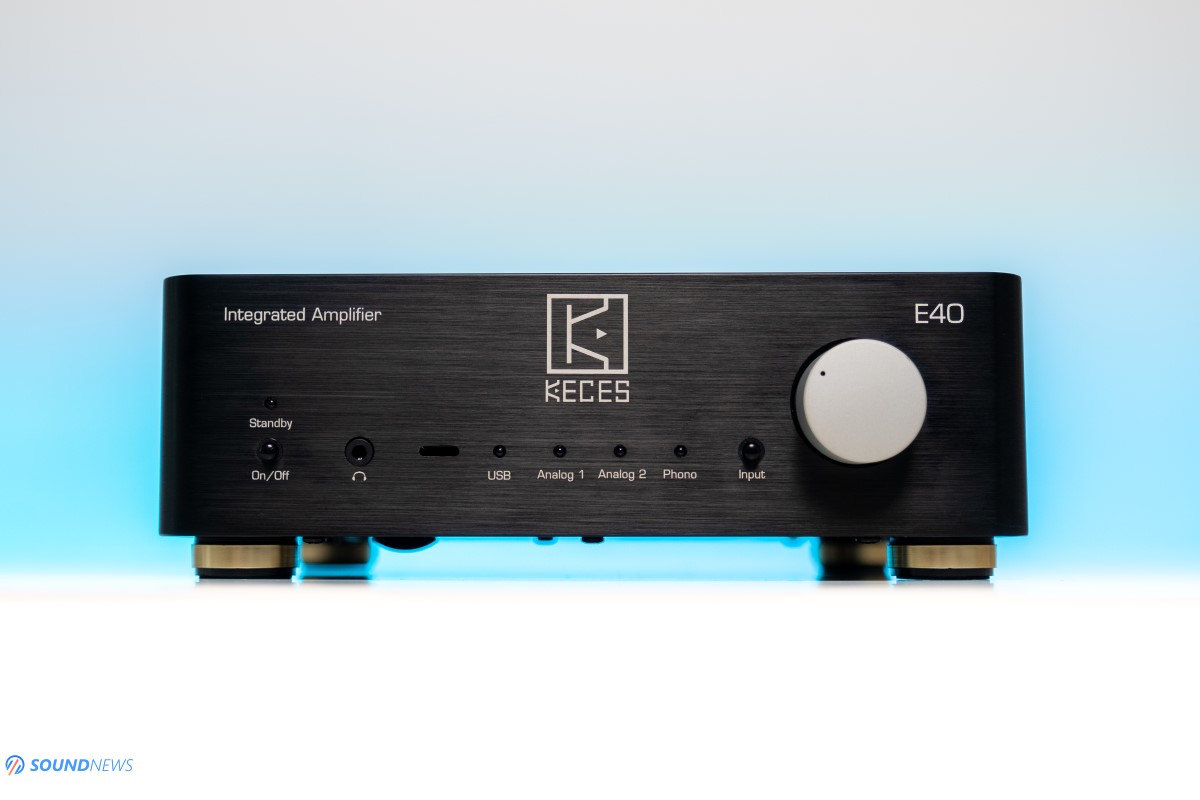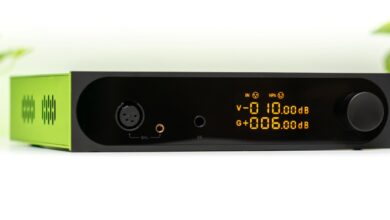KECES E40 Integrated Amp / Preamp / DAC / Headphone Amp Review
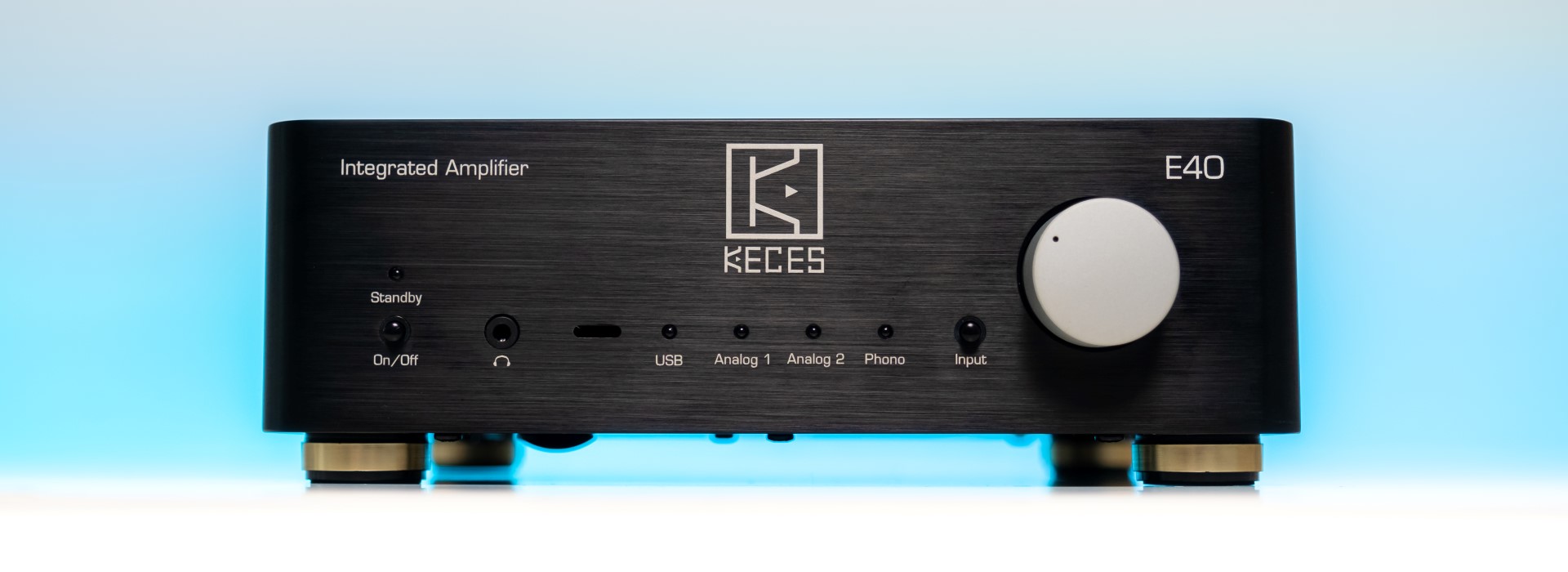
My Video Review:
About a year ago when I finally tested a passive power conditioner from KECES called BP-600 it made wonders in my desktop setup cleaning up those dirty power lines, offering an impeccably clean background, that I decided to rename it to Mr. Clean. It changed the way I listen to music and I started having a higher respect for such devices. Few readers even pointed out that it improved their home theater cinema setup offering a clearer, sharper and a livelier picture in their living rooms.
Few months later, a KECES S3 landed at our HQ – an all-in-one DAC, powerful headphone amp and pre-amp that left a very positive impression as well. I was particularly impressed by its feature set, by that easy to navigate menu, by that bright OLED screen, by its clean and super-tight sound and by that super precise relay-controlled volume pot that made wonders in a speaker or headphone setup.
KECES slowly but steadily was paving its way into the Western market, by offering great products at affordable prices. When they first hit foreign ground more than a decade ago, they were offering affordable DAC and headphone amp units for head-fi-ers looking for the best bang for the buck. Later on, when they started developing passive power conditioners with huge transformers inside them, it was only a matter of time when their integrated and power amplifiers would see the light of the day. A big part of any integrated of power amp success lies actually in the quality of the power supply and its filtering. KECES developed a plethora of power transformers in different sizes or shapes, so they have all the expertise and know-how to release such devices for us, speaker-philes.
With all that said, how a little-known Taiwanese company could compete with the biggest behemoths in the most crowded segment of the Hi-Fi world as integrated amplifiers? That was a question that appeared many times on their radar and that is precisely why they wanted to offer something radically different, packed with features, by sounding good and costing less. Could that be possible? Let’s find out!
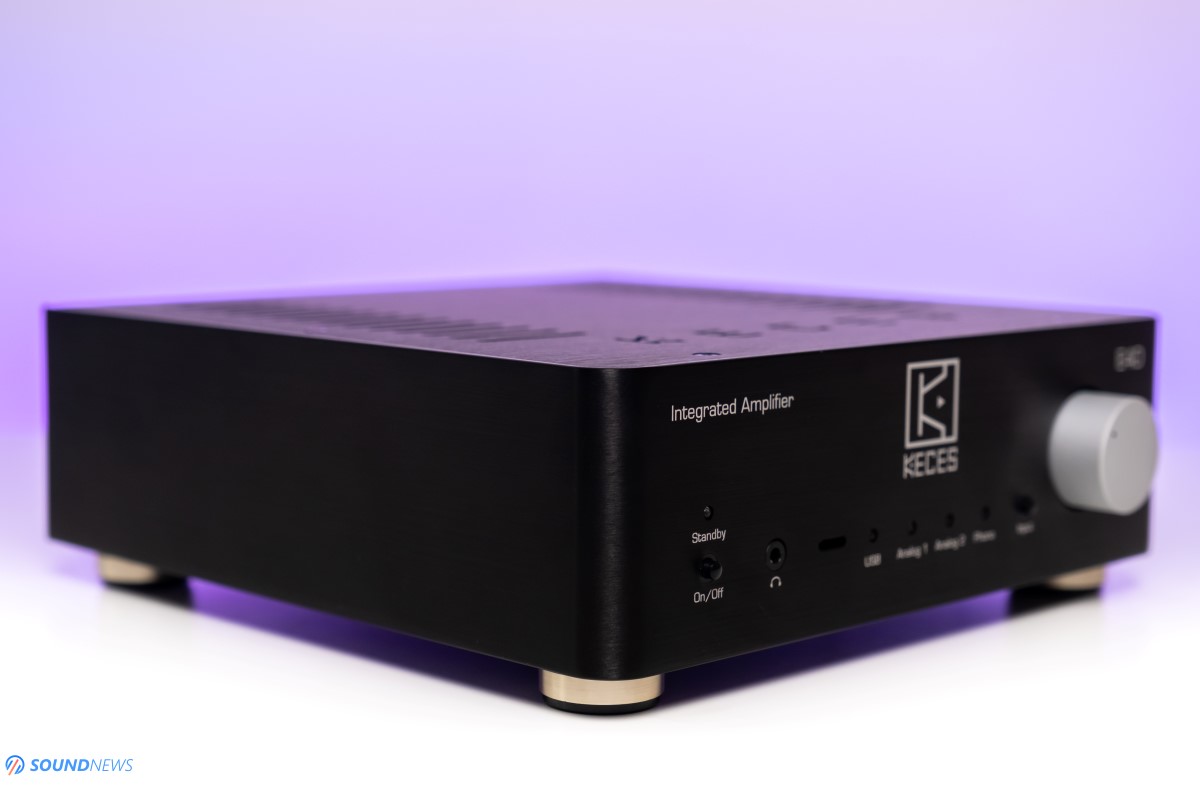
Unboxing & Package Contents
I was surprised by how lightweight and small is the actual product box when I received it, if you would tell me that inside it lies an integrated amplifier, an MM phono stage, a pre-amplifier, a digital to analog converter and a headphone amplifier in a single box, I would not believe you. It came protected by lots of foam around it and at only 4 kg in weight, it should resist a lot of abuse that international carriers are putting lately for all packages.
Inside the box you will find the unit itself, a very detailed user manual in English, a power cord and a neat, simple and elegant remote control. With it, you’ll control the motorized volume wheel of E40, you can mute or unmute it, select the desired input and put it into the stand-by mode – basically everything you need to control it in a speaker or headphone setup.
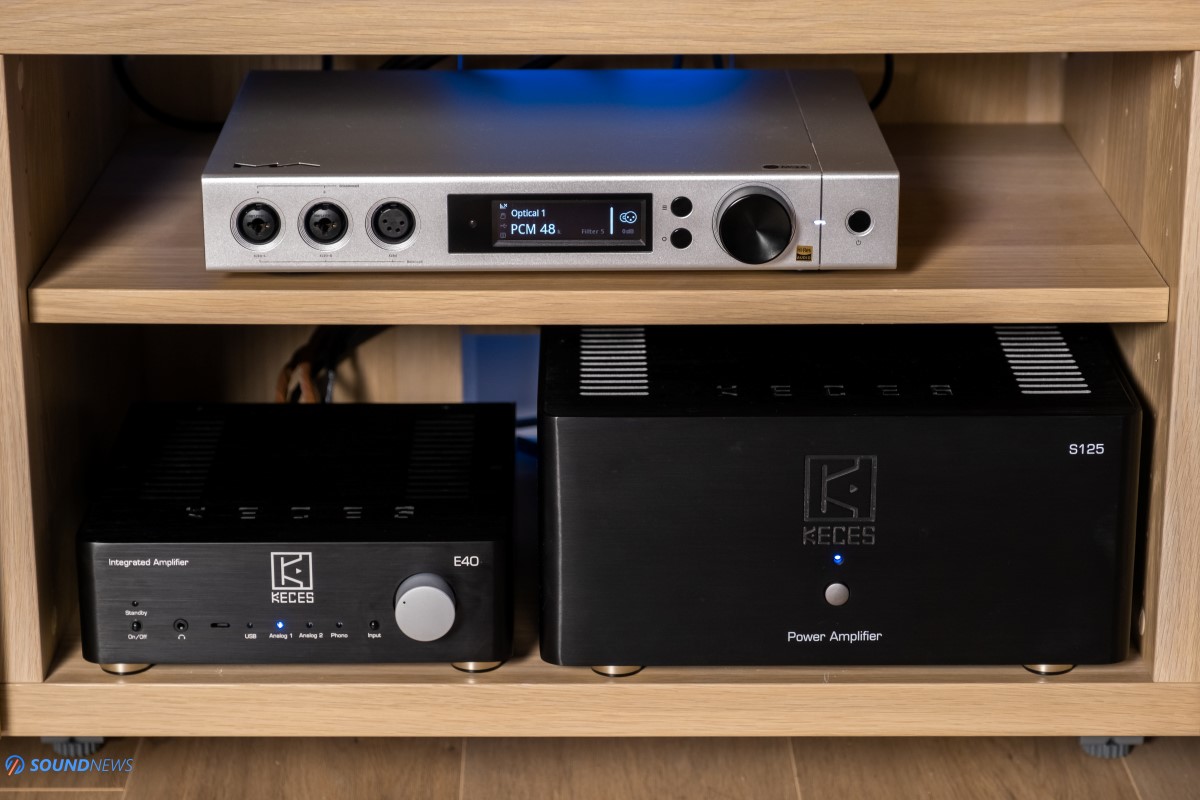
Design & Build Quality
I personally owned quite a few entry to mid-level integrated amplifiers from the likes of Cambridge Audio, Yamaha and Onkyo, but I was never really impressed by their punched-steel cases that looked good from afar and bad once I would inspect them closely. KECES went with a different approach, offering the same solid build quality as their best units like S3 DAC/Pre/HP amp, S125 power amp and with their big passive power conditioners. KECES is using only thick aluminum plates on all sides, with rounded corners on the front for a simple yet elegant look. I personally find its build quality top notch, simple yet attractive once I am very close to it.
E40 has some huge ventilation holes underneath and on top of the unit, already telling a story about its working principles and power output. After feeling how hot it is after about two hours of work, I have already a premonition about its working topology, but more about that very soon.
I was also surprised by those metal feet underneath it padded with lots of rubber to absorb micro-vibrations, so everything is simply well made to very high standards and I am actually surprised by the price point KECES went with this unit.
E40 weights just 4 kilos, it has a really small foot print, it is about the surface area of the Benchmark HPA4, but once I’m lifting and holding it in the hand, it gives an impression of a well-engineered product. Being so small and lightweight it should work perfectly in a desktop setup or in the living room. Thanks to the low-intensity blue-LEDs that shows the selected input on the front panel and to its small body size – it scores really high when it comes WAF, mine still didn’t spot it, please don’t tell her!
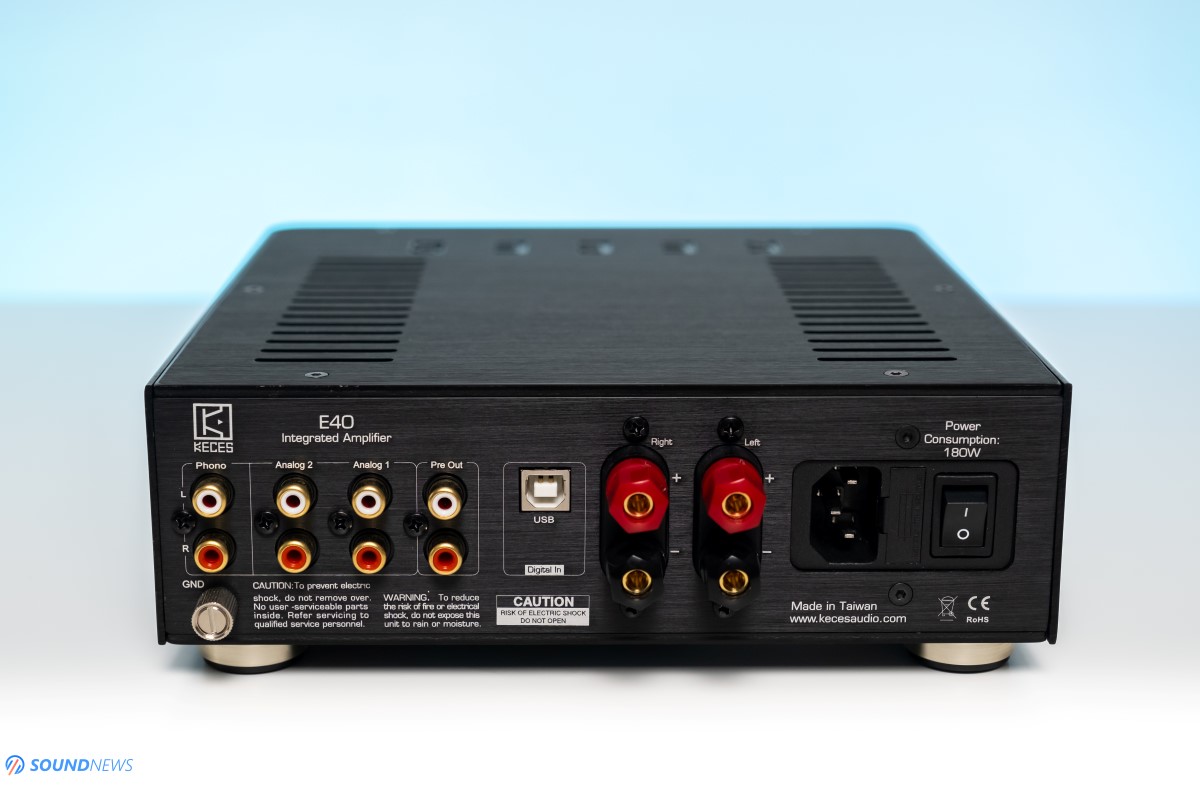
Controls & Connectivity
It has the simplest control scheme you could possibly have. On the front panel you can spot an On/Off Button, a headphone jack, an input selector button, a motorized volume wheel on the far right and in the middle four low-intensity LEDs will show the selected input.
On the back, from left to right you have an MM phono input to connect it to a turntable, two analog inputs in case you’ll want to use as an integrated or as a headphone amp only, there is also a pre-amp output that can also work with a powered sub-woofer. There is a USB Type-B input that makes it work as a dedicated DAC with your PC or MAC, be warned though that you will be limited to 16-bit 48 kHz files only. On the right you have your speaker outputs, the AC inlet and an On/Off switch.
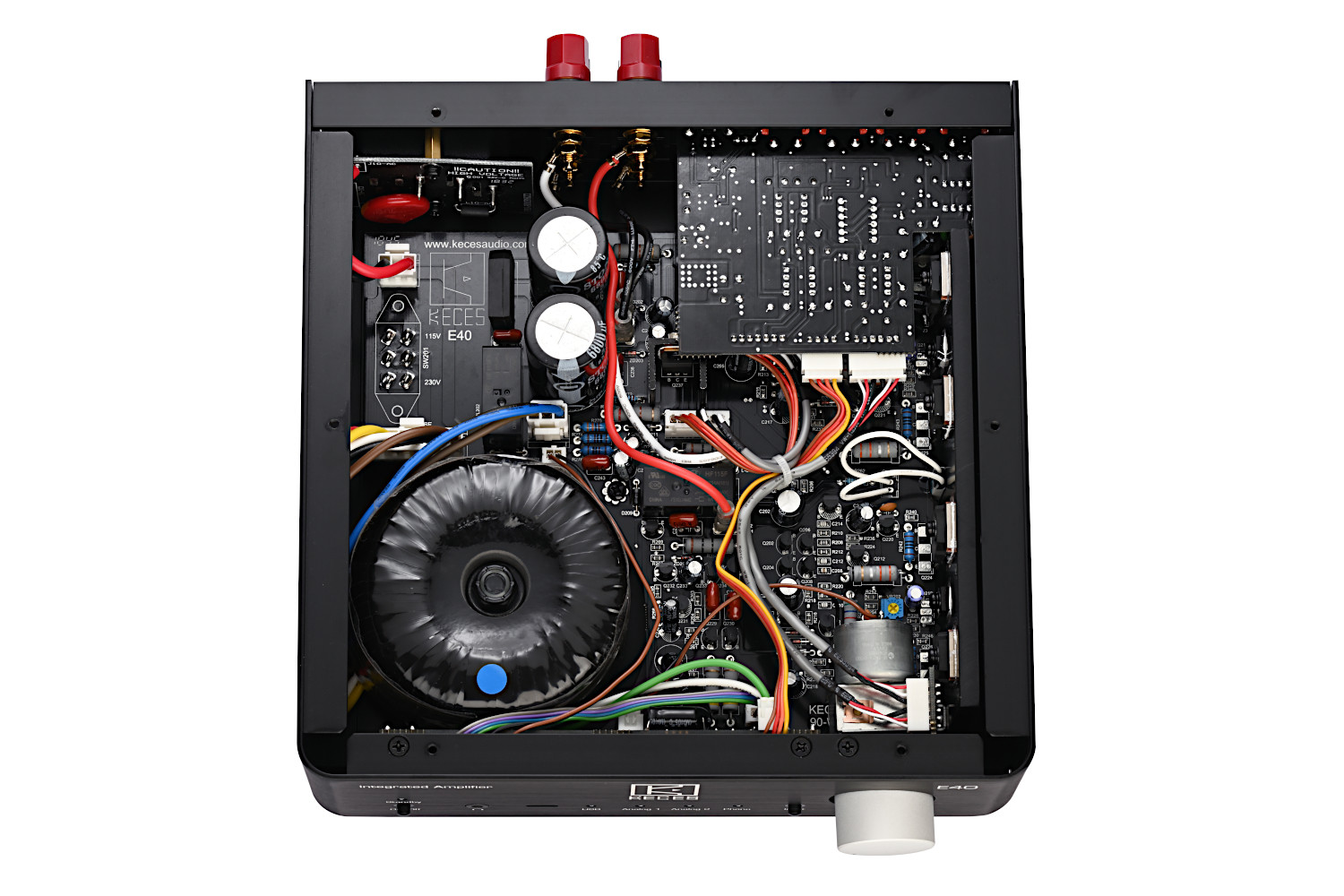
Tech inside the E40.
The biggest surprise for me was seeing something above that power switch on the back that reads: “Power Consumption 180 W” Huh? That is very interesting. Why you might ask? Because E40 is outputting 50 Watts in 8 Ohms and 65 Watts in 4 ohms. By going with the rule of thumb that Class-A amplifiers are having an efficiency of about ~35% (a little bit more or less, but in this ball park). By doing a simple math of 65 Watts (output) ÷ 0.35 (efficiency) we get the number of ~185 Watts of power consumption. Seeing how hot it is after about 2 hours of work in a well ventilated area, I am very inclined and I’m very glad to say that E40 works in full Class-A mode and maybe only at close to full power it will switch to Class-AB to cool down a bit.
All the entry-level, mid-level and a lot of top-class amplifiers are not working in “magical” Class-A anymore, this actually explains a lot about what I’ve heard when I connected it directly to Buchardt S400 loudspeakers.
KECES is not specifying the DAC chip, but being pretty good with PCs, I dug deep in the control panel and I found the Manufacturer and the exact model of the DAC chip itself – it is Texas Instruments PCM2704 DAC chip that indeed is limited to 16 bit and 48 kHz only. It is a decent sounding chip, I listened to multiple designs using it, Meier Audio was using it quite often in their DAC + headphone amp combos, lots of PC audio cards used it as well. It has decent performance numbers, but nothing really outstanding. Probably the best part of it is being part of the musical sounding Burr-Brown Audio chips, that are really easy to implement, because they don’t need any software code to work.
In terms of features, at least to me, E40 is very appealing and in my eyes, it already outperformed all my former entry and mid-level integrated amps that I used. It works in full Class-A, that as you all know has probably the best control and dynamics of any other topology at the cost of a much higher power consumption and heat dissipation. Optionally it also offers a dedicated DAC, a dedicated headphone amp section, plus a MM input and preamp output, so it really can’t be more complete than this.
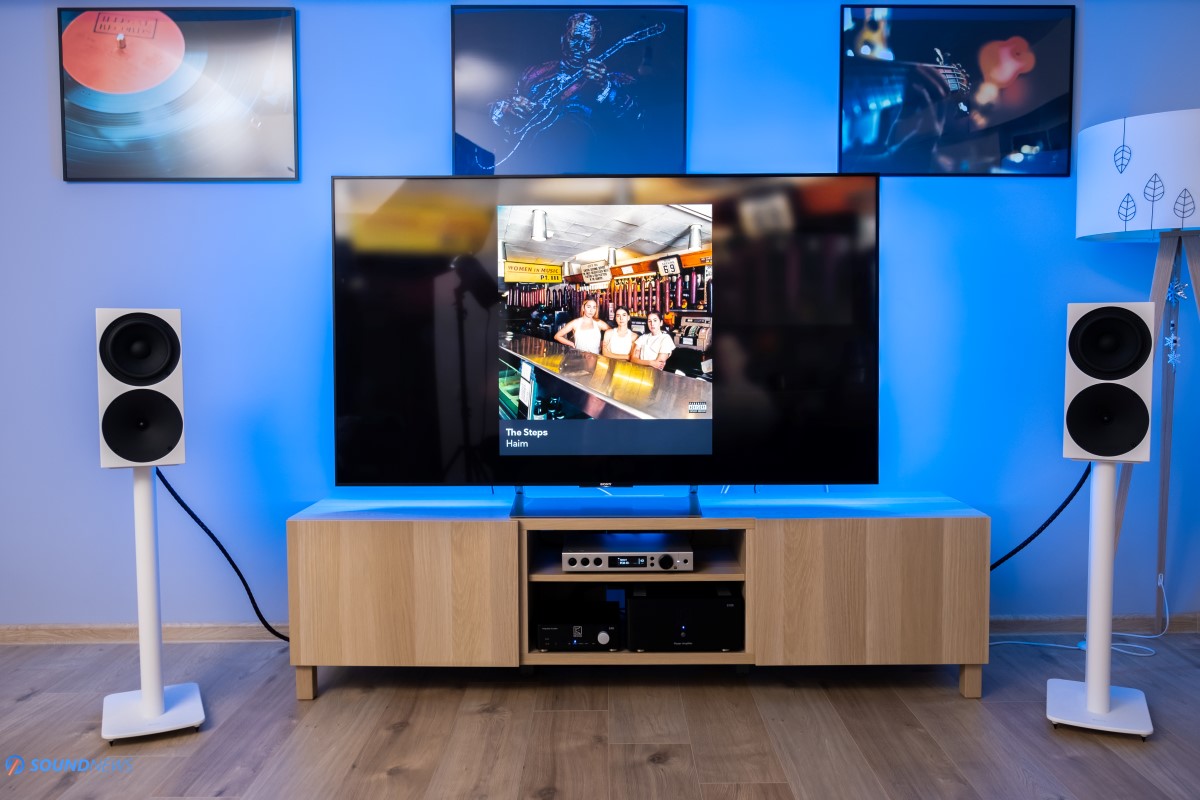
Test Equipment
Since I wanted to squeeze everything E40 is capable of, it was tested in a desktop headphone setup, where I used its internal DAC and headphone amplifier and I went through a wide variety of headphones, ranging from IEMs, to portable headphones and then to big and heavy planar-magnetics. For fun, I also connected it to a better DAC just to see how much I am missing with the internal one.
In a speaker setup, it was connected directly to the Matrix Element X and E40 replaced its much bigger brother: S125 power amplifier (which will be tested around here very soon too, but here’s a tiny hint: It sounds really transparent and effortless). I also removed the Benchmark HPA4 from the acoustic chain, since E40 is an integrated amplifier and has its own volume control via that interesting motorized volume pot. I used the Buchardt S400 loudspeakers with it and I want to point out that if you go and read my S400 review, you will observe how much those are changing depending on the amplifiers being used. S400 are somewhat sensitive about that power, it demands faster sounding amplifiers that are having a better driver control and a higher damping factor.
OK everybody, it’s time to play some groovy songs.
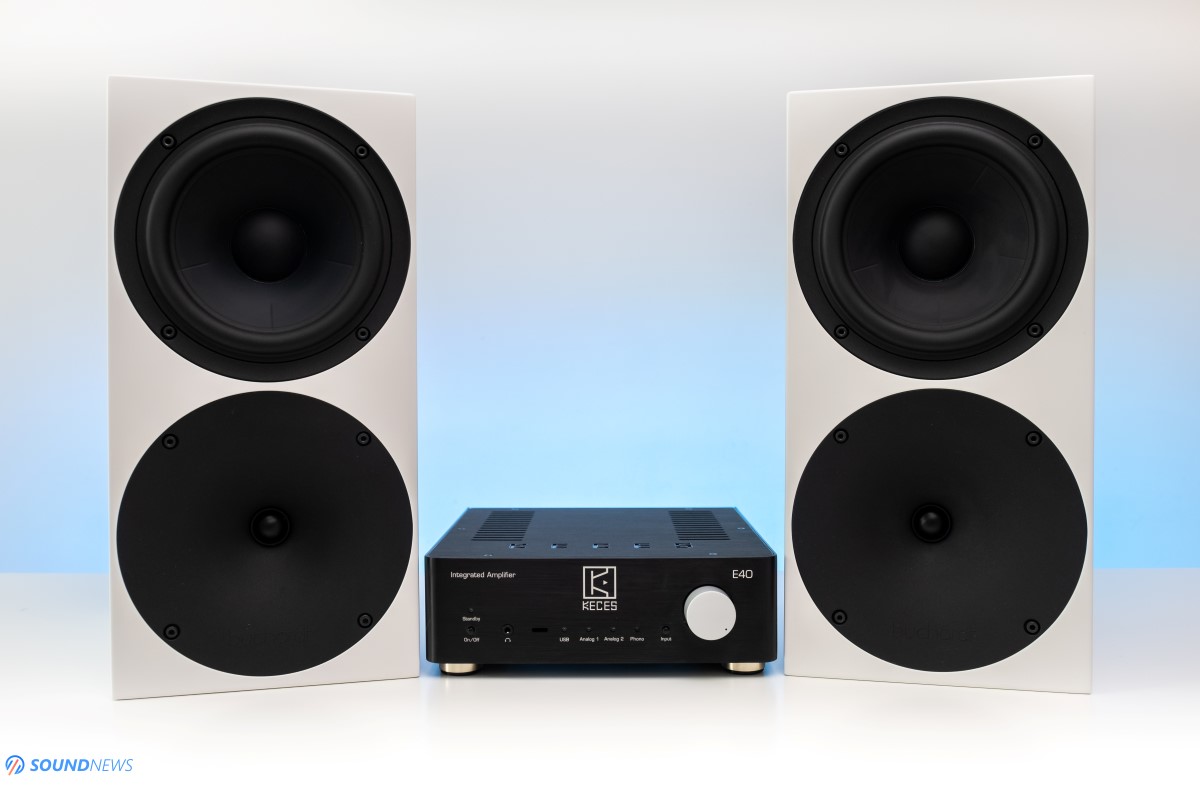
Sound Performance
I. Preliminary Impressions, Tonality & Timbre
When I removed its much bigger brother S125 from the acoustic chain and inserted the E40 into its place, I wasn’t very excited so to speak and didn’t have high hopes, because I knew I would miss it the first second of pressing play.
S400 has an awkward relationship with some amplifiers, they were drastically changing with few particular amplifiers and sources. From mellow, cozy and intimate, they could instantly transform into big, bold and ballsy sounding by just changing the amplifier with another one. The really affordable SMSL DA-8S was good with few speakers, but barely passable with S400, Hegel H190 and KECES S125 were absolute rulers and the ones that awoke the best those speakers could offer.
So, I set the Element X in the pure DAC mode, I put the volume at about 40% on E40 and fired up some of the latest music that I was listening to the other day. When latest album of Lettuce – Resonate (Tidal / Spotify) started sounding, I couldn’t believe my ears. The stage took a small hit, the absolute control was losing its grip and some of the tiny micro-details were lost as well, but everything else remained intact. I started swapping both units and re-listening to the same songs over and over again. It is very impressive to hear how close E40 sounds to its much bigger brother S125.
I’m glad to report that the transient response was good, dynamics rose high and down decently enough, engagement factor was through the roof and most importantly it carried a natural tone, a full-bodied and weighty presentation that Class-D amplifiers could only dream about. E40 offered a pleasant left to right soundstage and a stunning depth that was unheard of at this price point. Shockingly enough, the frequency response felt complete and extended on both ends, sub-bass was hitting nicely in the chest, my ears starting waving the way the woofers did. Midrange had a nice presence and weight to it decaying at the right time, upper treble was defined and had a decent bite too. I couldn’t go past 12 o’clock volume wise, so the power output was more than enough with these speakers. In the end I had close to zero complaints with this one and I could easily live with E40 as my daily driver if bookshelf speakers would be my only choice.
Even right now I can say that it outperformed my former entry to mid-level integrated amps from the Cambridge Audio, Yamaha and Onkyo. Even the top-of-the-line (at that time) Cambridge Audio Azur A851 didn’t sound so jumpy and engaging to me as E40 did. E40 simply sounded energetic, hard hitting, natural and full-bodied all the time.
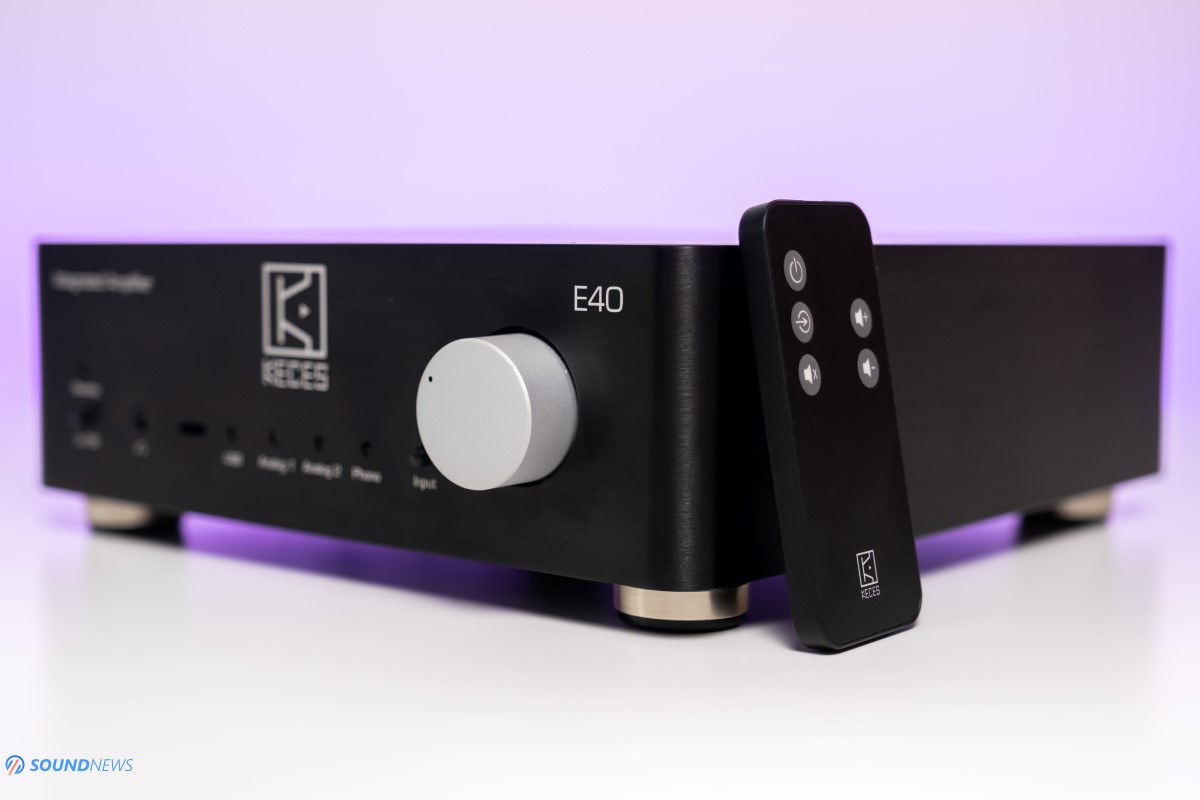
II. Noise Floor
Element X is very good at fighting back any kind of jitter or interference of any digital input so if I would hear any type of noise, it would be from the E40 itself, do note that Element X is feeding a slightly hotter signal of 2.3 V (at 0dB) via RCA and it can go as high as 8 V Rms (at +10 dB of gain) rivaling even top-of-the-line pre-amplifiers.
As much as I have stressed the E40, with and without white noise, with low and high volume levels, with reference recordings of various record labels, E40 presented itself clean, grain-free and quite good in terms of noise. Its internal toroidal transformer and power filtering said its lasts words and since KECES specializes at power filtering, it would be weird hearing a dirty background with hisses and noises coming out of my favorite tunes. Only, if I would pause my music and go all the way up to the max level, there would be a faint noise by staying really close to the speakers. However, if I would press play at that level, my eardrums and the woofers of S400 would simply blow to pieces. At my comfortable listening levels, E40 was sounding clean, having an inaudible noise floor, rivaling even my pricier units. My former $599 Burson Bang sounded much noisier and dirtier at normal listening levels, even less resolving speakers as Monitor Audio Silver 100 and Wharfedale Diamond 11.2 picked that noise quite easily.
It obviously depends a lot on what speakers are you using, but knowing the clean and transparent nature of S400, I can safely say that E40 will sound as clean, grain-free and black as night with most of them.
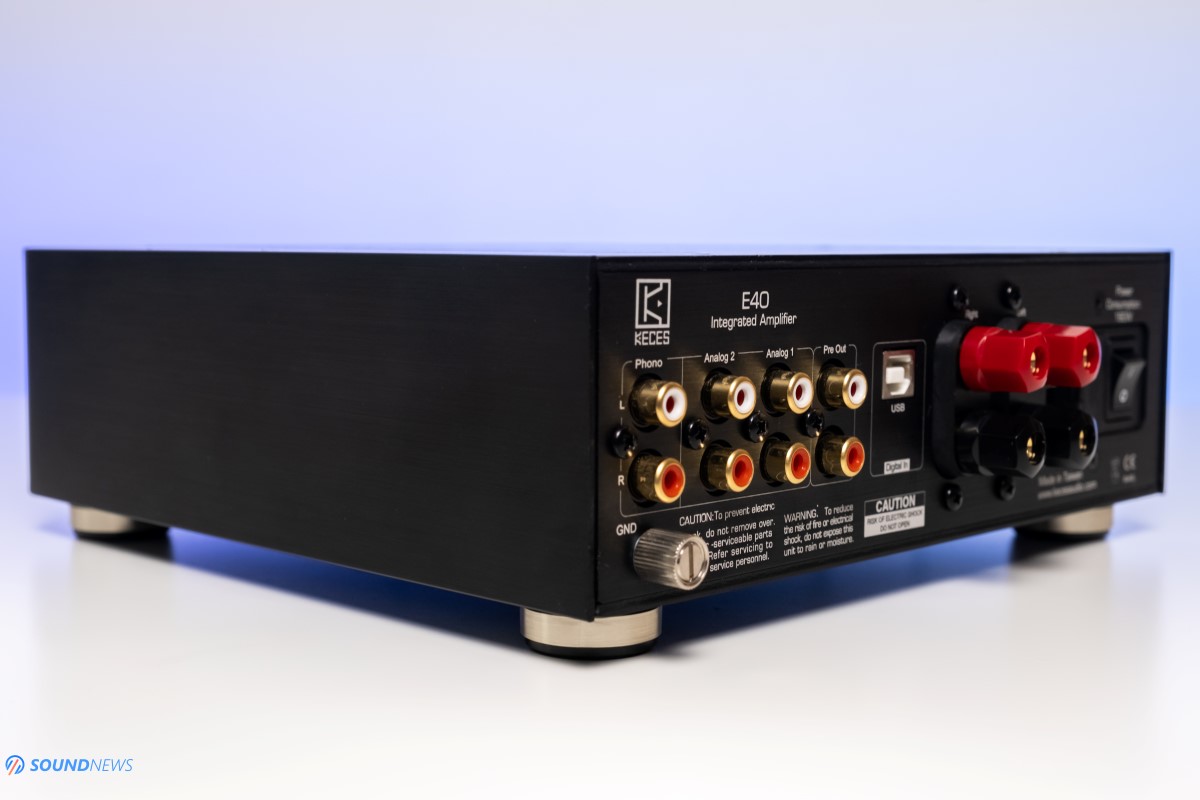
III. Transparency & Resolution
Generally speaking, E40 is good to great in terms of resolution. I was able to discern the smallest details in the latest singles of Norah Jones. While listening to I’m Alive (Tidal / Spotify), guitar plucks felt textured and present around me, the accompanying guitar was calling softly for my attention. Cymbals had a decent outline and shimmer without bothering at all. Piano didn’t feel like an empty shell, on the contrary it felt having a soft touch but a heavy tone, it decayed slowly and pleasantly, exactly how I wanted it to fade away. Her voice felt full of life vibrating naturally, it was blooming like a flower and was always calling for my attention. I was able to walk by all those sounds and instruments and be surrounded by them, so I consider the transparency being on a high level.
If I would never compare the E40 to costlier units I would never say this, but once I replaced the E40 with its bigger brother S125, I felt a clearer outline of every note, the picture in front of me would be much sharped but less vivid and colorful as it was with E40. I observed that E40 wants to put a spell on the listener with its vivid and slight colorful presentation. It adds textures, it adds meat to the bone as most of the Class-A amplifiers are doing. Resolution is good to great, but it is not on the same level with the rest of its performance. S125 felt crisper, slightly wider sounding, having a better outline and control of every sound. But it shouldn’t be a surprise since it costs about 3 times the price of E40 and offers a lot more power in return.
When I listened to less than perfect records as Dio – Holy Diver (Tidal / Spotify), the drums that should sound extremely detailed, crispy, amazingly punchy, with super defined hi hats and snare drum hits, started having softer leading edges, there was simply less information and their intensity would be lowered too, image was less crisp and sharp, the difference would not be huge, but defined and clear.
All in all, E40 impressed me a lot more with its transparency than with its resolution.
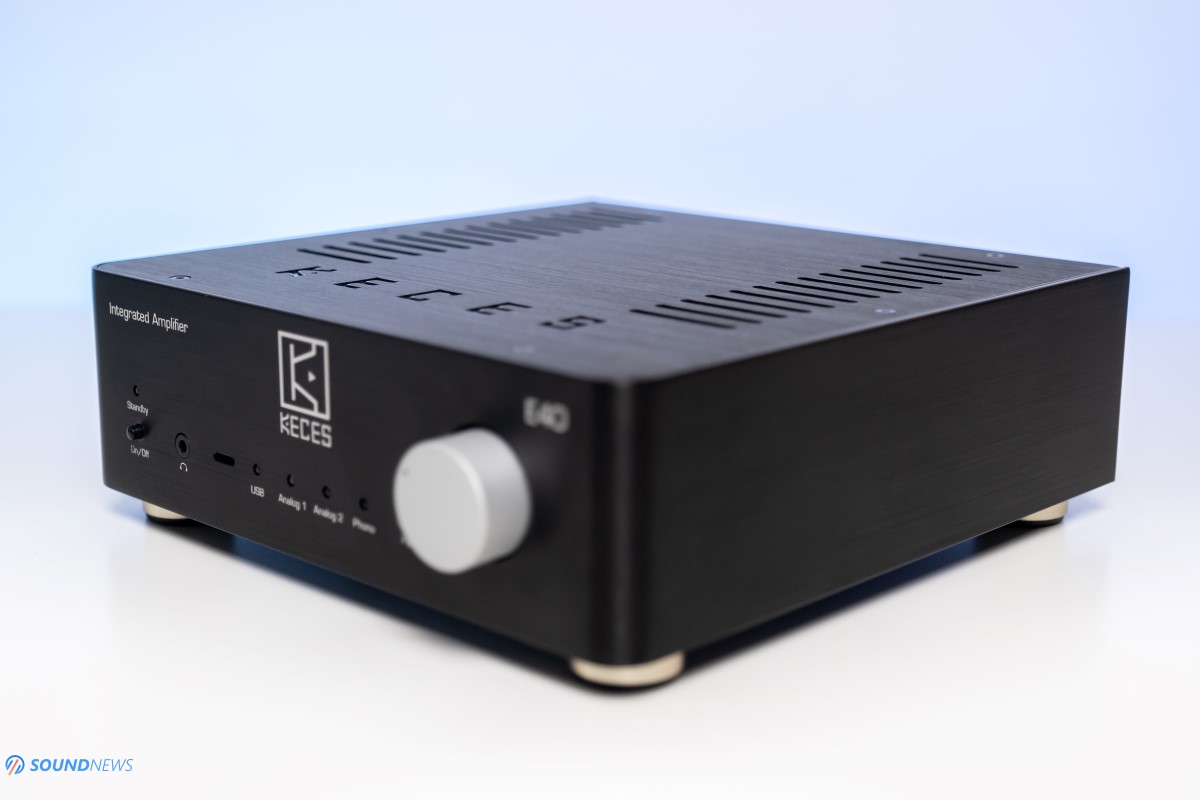
IV. Transient Response
This is where E40 shines brighter than its competition offering not only a faster presentation and an instant rise of dynamics, but an impressive heft and slam that I so crave about in aggressive sounding music.
Usually the difference between two amplifiers of much different price points but with the same power ratings would happen exactly in this chapter. Usually the one that is more expensive should simply carry more air with every hit and would simply impress a lot more the listener.
I’m always having a good laugh when I’m reading over some forums that an all-triode amplifier offering 15 Watts of pure Class-A power sounds a lot more powerful and articulate than a transistor-based Class-AB or Class-D amplifier at 60 Watts per channel. A Watt is a Watt right? That is correct, but still there no denying that Class-A amps had always had this feeling of sledge-hammers when it came to speed and punch, those always carried just a bit more oomph with every note, more bass, more midrange, more punch, more of everything basically. E40 is not that impressive when your look at its numbers, only 65 Watts in 4 Ohms, but only when you listen to it, it feels like a much more powerful unit, it is really hard to describe that feeling.
For example, when I moved from SMSL DA-8s (Class-D) that offered 80 Watts in 4 Ohms to a less powerful E40, from Madonna like hits, E40 felt like throwing Rocky Balboa hits on me. I simply felt more air moving towards me, the weight of every note felt heavier and it would simply impress me more with faster paced music.

V. Soundstage & Depth
Another trait of a good snappy amplifier is that with every note a larger amount of air will be moved. Add an unconventional loudspeaker like S400 that is leaned back, that has a huge passive radiator on the back dispersing bass notes in all directions and you could almost imagine how the end result will sound.
Another plus of its easy-breezy presentation is that everything is not felt forced, not even soundstage size that flies beautifully in all directions. I already mentioned that is has a really good transparency and it goes hand in hand with the depth which is felt easily and naturally. While listening to acoustic music, I could easily appreciate the distance between each note and myself so that is another plus for the E40 in my book.
I can’t go with the standard cliché that sounds were coming like behind the wall, I felt them more like coming from everywhere in a very easy and natural manner. Soundstage size and everything that has to do with it, like imaging or pin point location of all the notes around the listener are all on a high level and in this regard, I could easily compare this one with much bigger, heavier and pricier units. That is the actual truth and if I would ever build myself a secondary smaller speaker setup, I already know the integrated amp of my choice.
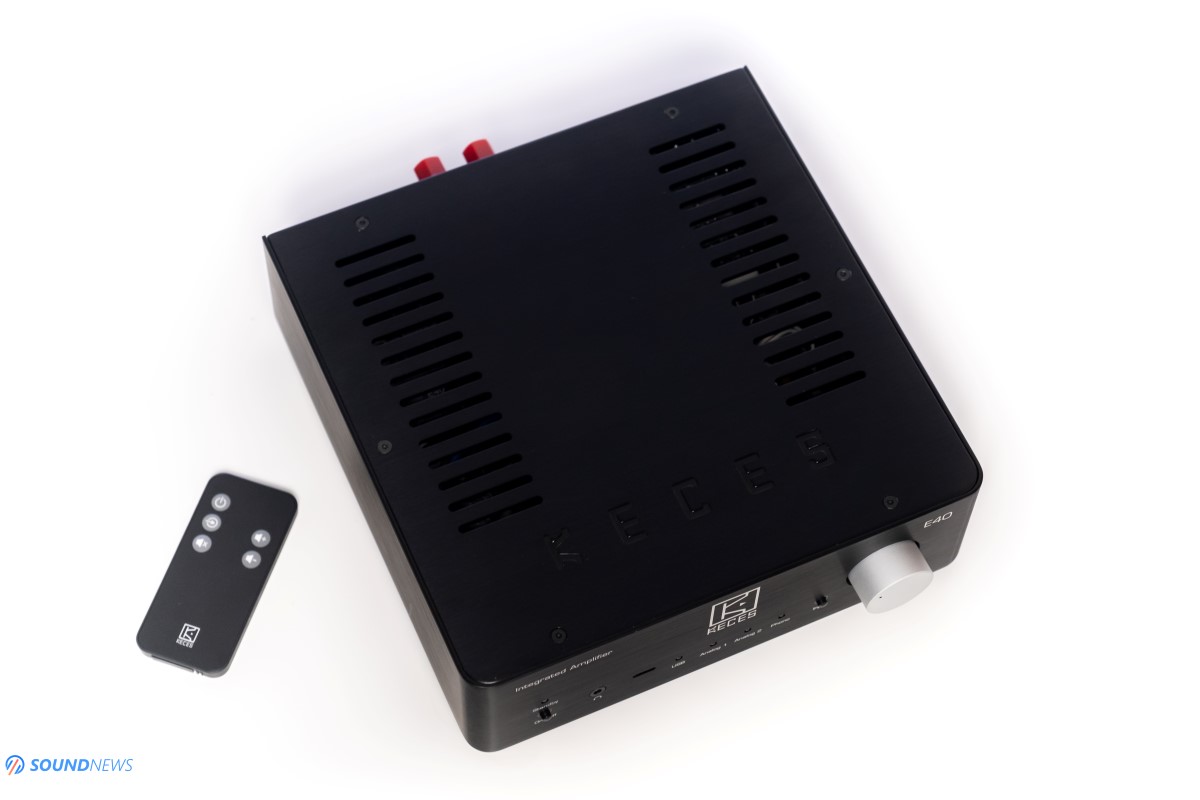
VI. Frequency Response
When I was moving back and forth both KECES units, I felt some disparities between them, but not in terms of frequency response. Engaging some Daft Punk, Infected Mushroom and The Prodigy, I felt a healthy dose of dopamine entering my blood stream. Bass notes went low and rumbled hard. Punch was there too and overall; I’ve heard an excellent bass performance. Even down to the lowest octaves I’ve heard the air moving and thumping my chest nicely. Speed of delivery was nice too, S125 was still faster and snappier sounding, but at 3X the price of E40, that shouldn’t be a surprise to anyone.
Even listening to unconventional and underground Zen-Funk like Sha’s Feckel and Nik Bärtsch Ronin (please give them a try, Sha’s a good friend of mine), made me realize that E40 is somehow more impressive in terms of bass and midrange performance than everything else. Their ritual like grooves almost always puts me into a relaxed state of mind. I find the bass and midrange performance being hypnotic, wandering the listening room like a master-less samurai, it is simply all over the place that infuses just a bit more of naturalness into those chaotic songs.
Few weeks ago when I just unpacked it, plugged it in for a lengthy burn-in, I decided to give it a try by listening to some Lettuce and Norah Jones. Even cold as it has, I already felt the heart-warming midrange tones that were sweeter than usual, I almost want to call it colorful in the midrange, but I will simply say that it is more vivid, more saturated in there that brings soul and joy to the music.
Treble was felt slightly different in the speaker setup versus the headphone setup but I blame the transducers that were completely different in size and shape, having distinct working principles and power requirements. In the speaker setup, E40 sounded as what I would call smooth and relaxed, having a decent amount of detail and presence, but without being very impressive in the top-octave. The higher registers felt rolled-off a bit that made be go through those albums like butter on bread. E40 has a relaxed top-end that makes me listen to music without fearing that a piercing note will appear on the horizon soon. The only area in the FR that felt smoother in a way was definitely that top-end.
Weirdly enough, in the headphone setup E40 presented itself very different and I’ve easily heard even the top-octave quite precise, defined, but still free of any brightness and teeth-clenching moments. E40 was an absolute beast with all my headphones and what a nasty, wild one it was…
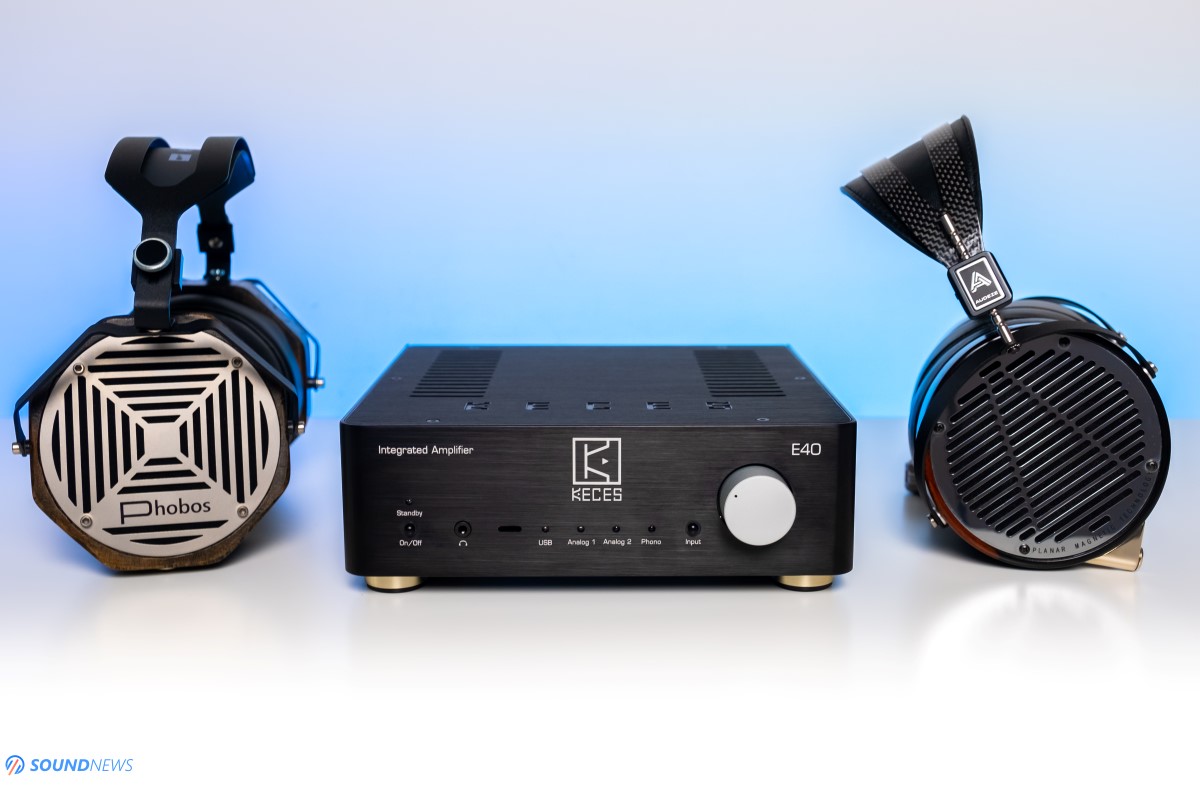
VII. Internal DAC + Headphone Amplifier performance
It seems that I left the best for last. Usually seeing power ratings likes 100 mW per 32 Ohms would simply make me feel dead inside, because most of the portable headphone amplifiers are offering much more than that and desktop headphone amp units are offering somewhere around 20 and 100 times more than that, so as you can understand my enthusiasm level was very low.
When I’m getting new headphone amps to play with, I always test their limits first and only after I’m moving to easier loads and to the most sensitive ones later on. Seeing that 3.5mm headphone output instead of a more serious 6.35 mm jack made me again lower my expectations to abysmal levels.
Now, imagine my reaction, when at about 50% of volume with the most inefficient headphones I have on loan, the super hard to drive Audeze LCD-4 started sounding amazingly alive, it was kicking super hard, the headroom felt bottomless, it simply sounded like a very competent and really powerful headphone amp. How on Earth does it have 100mW of power? Was that a typing error? I’m still waiting for an answer. Simply put, if you want to drive a pair of passive speakers and some inefficient headphones with a single unit without destroying your wallet, E40 could easily be that unit.
I started swapping headphones, I connected the Hifiman Arya, then that incredibly large Erzetich Phobos and the super fun and engaging Quad ERA-1. I couldn’t believe my ears, everything was in place: transient response was simply amazing, it had all the slam and punch I wanted, it had a speedy presentation, it felt powerful and limitless in terms of dynamics. Hell, even frequency response felt complete, without any kind of roll-off in the sub-bass or upper treble.
Mind you, I was listening directly from its internal DAC, I even streamed some music from Tidal with software decoding of MQA files and it worked admirably! There was a crisper top-end, somehow it was a little more defined compared to what I’ve heard on speakers, but don’t forget that the headphones that I am listening right now are more than twice the price of the speakers, so it was natural hearing more of everything.
I did listen to it in a headphone setup for about two days, completely replacing a setup that costs 10 times the price of E40. So, did it sound 10 times less impressive than the Matrix Audio Element X connected to the Benchmark HPA4? Certainly not, I would say it offered about ~70% of performance compared to the Big Rig, so in the end E40 sounded quite impressive even in a headphone setup. The only thing that bothered me, was the resolution of its internal DAC, it was more than decent but far from ultra-resolute, crisp, sharp and super-extended how Element X is.
I also observed that it wasn’t as hot as it was in the speaker setup, it was barely warm at touch even after a full-day of listening with heavy duty and inefficient headphones. In the speaker setup, after about an hour of use, I could easily make an omelet on it.
I will skip the comparison section for now, but will add that it simply smoked both the SMSL DA-8S and the Burson Bang. In the upcoming KECES S125 review, E40 will be compared to its bigger brother so stay tuned for that.
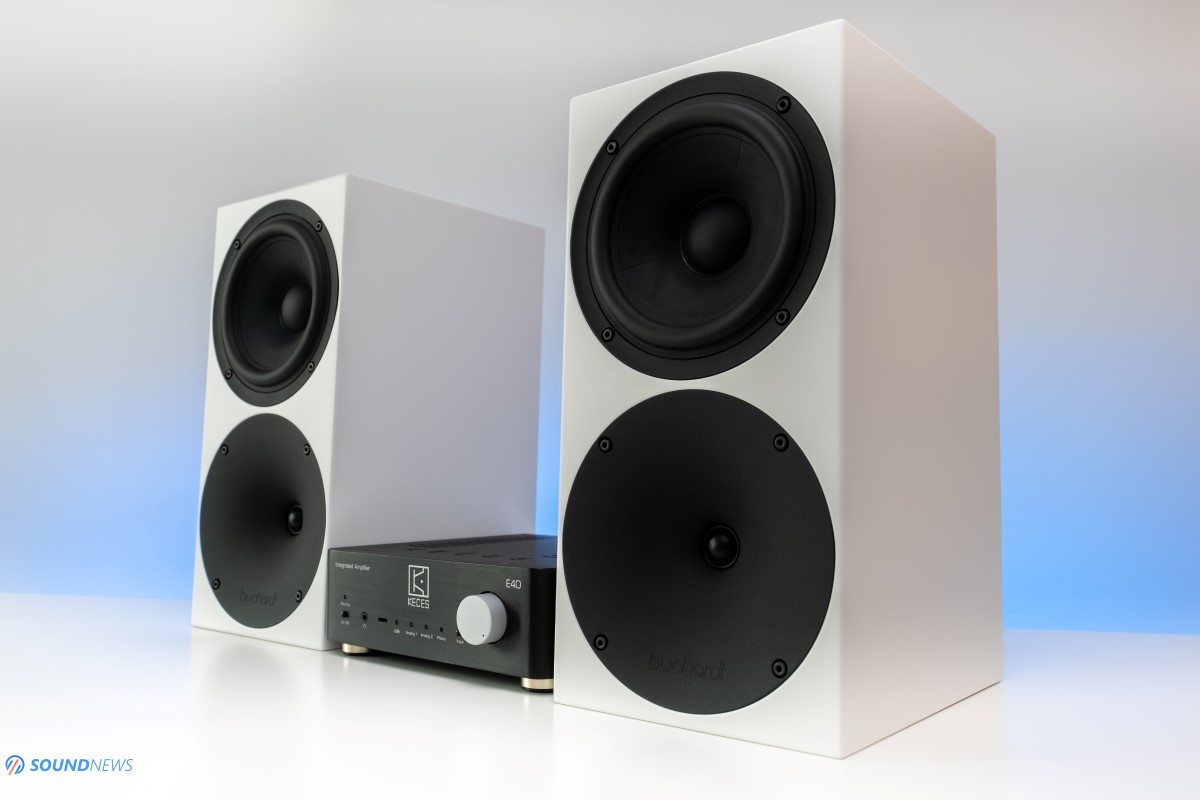
Conclusion
It never passed my mind that this small Taiwanese black box, at only 4 kilos and slightly bigger than a book could move so easily and gracefully a petulant pair of speakers as Buchardt S400 and so close to their maximum potential.
I could hardly call it an integrated amplifier, because in reality it is much more than that. It shined as a dedicated DAC plus headphone amplifier in a desktop setup, it still can work as a preamplifier for a power amp or with a powered subwoofer. It has a MM phono input as well, so when it comes to analog connectivity, sky is the limit with KECES E40.
I wish I knew about this one when it was announced, because it would save me money and precious time by not going the long and exhausting route of trying a myriad of entry to mid-level integrated amplifiers.
KECES E40 will cost you $599 in USA and €599 here in Europe, contact your local distributor for one.
PROS:
- Nice looking device, solid build quality
- Small footprint, could be easily integrated into tight spaces
- Impressive number of analog inputs
- Has a full-bodied and a natural presentation
- The amount of slam it produces was felt with my whole body, great transient response
- Extended frequency response
- Good fluidity and amazing smoothness
- A very feature packed 4-in-1 device
- It really shined as a headphone amp unit
- Great value!
CONS:
- Its internal DAC is limited to 16-bit 48 kHz PCM only
- An optical input would great to have
ASSOCIATED EQUIPMENT:
- DACs: Matrix Audio Element X, Denafrips Venus, Musician Pegasus, Audio-GD R7, Flux Lab Acoustic FCN-10
- Preamps: Benchmark HPA4
- Integrated Amps: KECES E40, Hegel H190, SMSL DA-8S
- Power Amps: KECES S125, Burson Bang
- Headphone Amps: SparkoS Labs Aries, Benchmark HPA4
- Loudspeakers: Buchardt Audio S400, KEF LS50W
- Full-sized headphones: Audeze LCD-4, Erzetich Phobos, Hifiman Arya, Quad ERA-1
- Interconnects: QED Reference XLR, Aune AL3 XLR
- Power Cables: Isotek EVO3 Premier (x2)
- Speaker cables: Kimber PR8, Audioquest Type4
- Balanced Power Conditioners: PLiXiR Elite BAC 400, KECES BP-600
